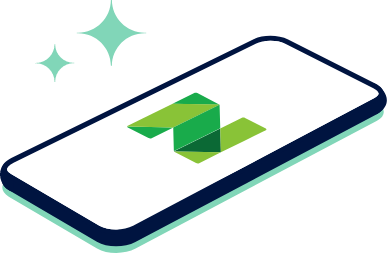Free Budget Template and Tips For Getting Started
Add your income and expenses to this monthly budget planner, and we'll show how your spending aligns with the 50/30/20 rule.
Many, or all, of the products featured on this page are from our advertising partners who compensate us when you take certain actions on our website or click to take an action on their website. However, this does not influence our evaluations. Our opinions are our own. Here is a list of our partners and here's how we make money.
A budget planner is a tool, such as a worksheet or template, that you can use to design your budget. A successful budget planner helps you decide how to best spend your money while setting aside some for savings and avoiding or reducing debt.
NerdWallet's budget template incorporates the 50/30/20 rule, which suggests that 50% of your income goes toward needs, 30% toward wants and 20% toward savings and debt repayment.
Before making your budget, gather this information
Before you get started with our free budget spreadsheet below, you’ll need some key financial information, including:
- Your take-home pay, or your monthly income after taxes. A pay stub will likely be the easiest place to find this information.
- Your fixed expenses. These are things such as housing and utility payments, insurance premiums, debt or loan amounts, child care costs, memberships and other bills that stay the same each month. Check account statements to find recurring charges and their amounts.
- Your variable costs. These are expenses that change every month, including groceries, gas costs, shopping, dining out, travel and entertainment. You can look back at past transactions to estimate your spending in these categories.
- Your debts, including interest. Be sure to include credit card debt, medical debt and other kinds of debt in your monthly budget.
Having all of this information ready will make calculating your budget much smoother and more accurate.
How to use this template
In the worksheet below, add your monthly income, expenses and any contributions to savings or debt repayment. We’ll add them up and show how your spending aligns with the 50/30/20 budget, which is a spending breakdown we think of less as a strict rule and more as an ideal to work toward.
NerdWallet budget template
Ways to budget using other tools and systems
If the planner above isn’t a good fit for you, explore other budget spreadsheets.
Or, consider one of our picks for the best budget apps. Most apps sync with your financial accounts, so they can track and categorize expenses for you. Some budgeting apps are free, while others charge a monthly or annual fee.
If it’s the 50/30/20 rule that doesn’t resonate with you, here are other budgeting systems and examples of how they can organize your spending in different ways:
The 60/30/10 budget
If you like having structured spending guidance but find the 50/30/20 budget to be out of reach, consider the 60/30/10 budget. This method allocates a larger portion of income to needs and a smaller amount to savings.
While ideally budgeters would work up to contributing more than 10% to savings, that’s just not feasible for some. The 60/30/10 framework may work well for those with lower incomes, living in higher cost-of-living areas, or those who need to prioritize essentials over savings.
For example: Say your monthly take-home pay is $3,000. With the 60/30/10 budget, you would devote $1,800 to needs, $900 to wants and $300 toward savings. (That’s as opposed to the 50/30/20 breakdown: $1,500 for needs, $900 for wants and $600 for savings.)
Zero-based budget
People who overspend or are meticulous about tracking their cash flow may benefit from a zero-based budget. While the 50/30/20 and 60/30/10 frameworks are like broad guidelines for what to do with your money, the zero-based budget has you get specific and intentional with your paycheck. With this approach, you give every single dollar in your budget a purpose until you end up with zero dollars.
For example: You would make a plan for every bit of that $3,000, allocating specific amounts to housing, groceries, debt payments, savings and so on. If you have $200 left unassigned after covering essentials, you’d give that money a purpose, too — perhaps by putting it toward entertainment or dining out.
Cash envelope budget
This system is similar to the zero-based budget. But while the zero-based budget works best for planners, the envelope system may be effective for impulse spenders who want to control how much they spend.
With the cash envelope system, you allocate a set amount of money to each item in your budget. You then create envelopes — real, or virtual ones through an app — for each category and stuff the set amount of cash in them. Once the envelope is empty, you can’t spend any more.
For example: For your $3,000, you would literally (or virtually) put a certain amount of money in envelopes that are assigned to various categories. Say there was $100 in your dining out envelope, and you’ve already spent $90. Since there’s only $10 left in your envelope, you would know to skip the dinner plans.
Pay-yourself-first budget
Also known as reverse budgeting, pay-yourself-first budgeting involves tucking away money for things such as savings and investing first. The rest of your money can then go to other priorities, like bills or leisure. It can be an ideal system for people who want to prioritize long-term goals without accounting for every penny.
For example: The first thing you do with that $3,000 is stash $300 for your IRA and $100 for your emergency fund. As for the rest, you would budget as you wish but likely wouldn’t be as meticulous as with the zero-based or envelope systems.
Remember that the best budget is one that works for you. Take time to tweak your approach and adjust your spending as needed until you reach your ideal budget.
If you can’t make that budget a reality, or if you’re struggling to get a handle on your finances, budgeting might not be enough for you. Explore other options, such as seeking expert financial advice or resources that can help you pay bills.
Stress less. Track more.
See the full picture: savings, debt, investments and more. Smarter money moves start in our app.
Article sources
NerdWallet writers are subject matter authorities who use primary,
trustworthy sources to inform their work, including peer-reviewed
studies, government websites, academic research and interviews with
industry experts. All content is fact-checked for accuracy, timeliness
and relevance. You can learn more about NerdWallet's high
standards for journalism by reading our
editorial guidelines.
Related articles







